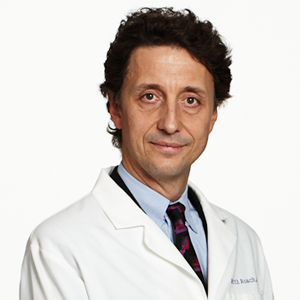To Your Good Health: Lesion on lung could be scar tissue, infection, cancer, etc.

Keith Roach, M.D., syndicated columnist
DEAR DR. ROACH: My childhood friend just emailed me that she has a 1.1-cm lesion on her lung. It was found on a CT scan. She’s having another CT scan today. She is a former smoker and has COPD. Is the lesion something that’s part of COPD? What’s the difference between a lesion and something else? — J.B.
ANSWER: A “lesion” is simply a term that means something doesn’t belong there, but in this case, the suspicion is that it means some kind of mass. The big concern in a current or former smoker is lung cancer. The appearance of the lesion in the CT scan can help tell what it represents.
There are calculators that can help give an idea of how likely a lung lesion (we often use the term “nodule” for a solid lesion) is to be cancer. Based only on the information you gave me, there’s about a 15%-20% chance of cancer, which is high enough that she would be recommended a biopsy. Depending on where it is in the lung, the biopsy can be done by bronchoscopy, ultrasound, or a CT-guided biopsy through the skin if the nodule isn’t close enough to a large airway.
If it (hopefully) isn’t cancer, it could be scar tissue, a current or past infection, a benign tumor, or many other possibilities, almost all of which are better than lung cancer.
DEAR DR. ROACH: My husband has Type 2 diabetes and has been on Trulicity for a few years with great results. Lately, when it’s time for refills, the pharmacies are saying that it’s on back order and not available for three to four weeks. I am concerned how this affects his diabetes and health. Why is there this discrepancy? — K.F.
ANSWER: Dulaglutide (Trulicity) is in the class of GLP-1 agonists, like semaglutide (Ozempic and Wegovy). Not only are they good treatments for diabetes, they tend to promote weight loss and reduce the risk of heart disease. Consequently, they are in high demand.
Semaglutide and a similar drug, tirzepatide, have been approved for weight loss by the Food and Drug Administration, while Trulicity has not. However, many insurance companies are demanding that their customers try a different drug when their doctor has prescribed semaglutide, and dulaglutide is one of the most common ones to try. They are very similar, although Trulicity isn’t tested as thoroughly for weight loss. The manufacturer, Eli Lilly, has stated that manufacturing shortages are likely to extend through December 2024.
It is very frustrating to have a medicine that you have been taking for years become unavailable, and the potential for harm is significant. It takes the body weeks (or months) to get used to the higher doses, and if a person is off of it for more than a few weeks, they may have to restart at the lowest dose and build up again to the higher dose to avoid severe side effects. For your husband, going without his needed medication will make his diabetes less well-controlled.
I’m afraid that I don’t have a good solution. The drug companies are making truly enormous profits from these medicines and have every incentive to increase manufacturing (which they are). But demand continues to outstrip supply.
DEAR DR. ROACH: In a recent column, you confirmed that my information about AREDS2 vitamins may be helpful for age-related macular degeneration (AMD). Now I just visited my ophthalmologist, and he asked me if I used these vitamins. I expected him to be pleased when I told him that I had taken them for years. However, he explained that for dry AMD, the medicine was not effective.
He said I should take an ordinary multivitamin instead because too much of some of the special ingredients in AREDS2 was not good for me. Is there new information on this? — H.R.R.
ANSWER: There must be a miscommunication here. The original AREDS vitamin supplement was shown to reduce the risk of progression in people with dry AMD. However, the initial formulation was shown to possibly increase the risk of advanced prostate cancer and lung cancer in smokers. The new formulation, AREDS2, removed the possibly harmful supplements.
Although the effect of AREDS2 supplements is small, it’s one of the few effective treatments that we have (apart from quitting smoking, minimizing alcohol, and a healthy Mediterranean-style diet). New injections (Syfovre and Izervay) have been approved for dry AMD, but not all ophthalmologists recommend these treatments. You should follow up with your ophthalmologist again.
EDITOR’S NOTE: Readers may email questions to ToYourGoodHealth@med.cornell.edu or request an order form of available health newsletters or mail questions to P.O. Box 536475, Orlando, FL 32853-6475.
